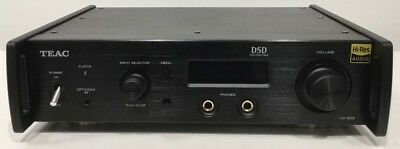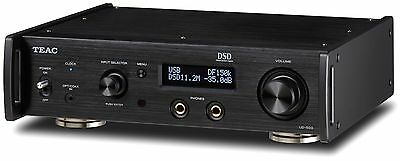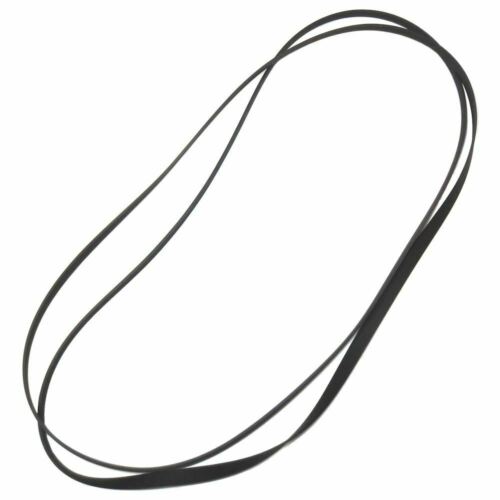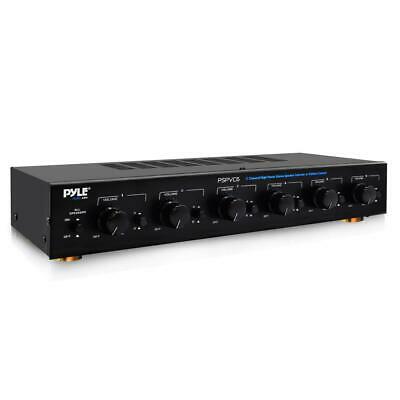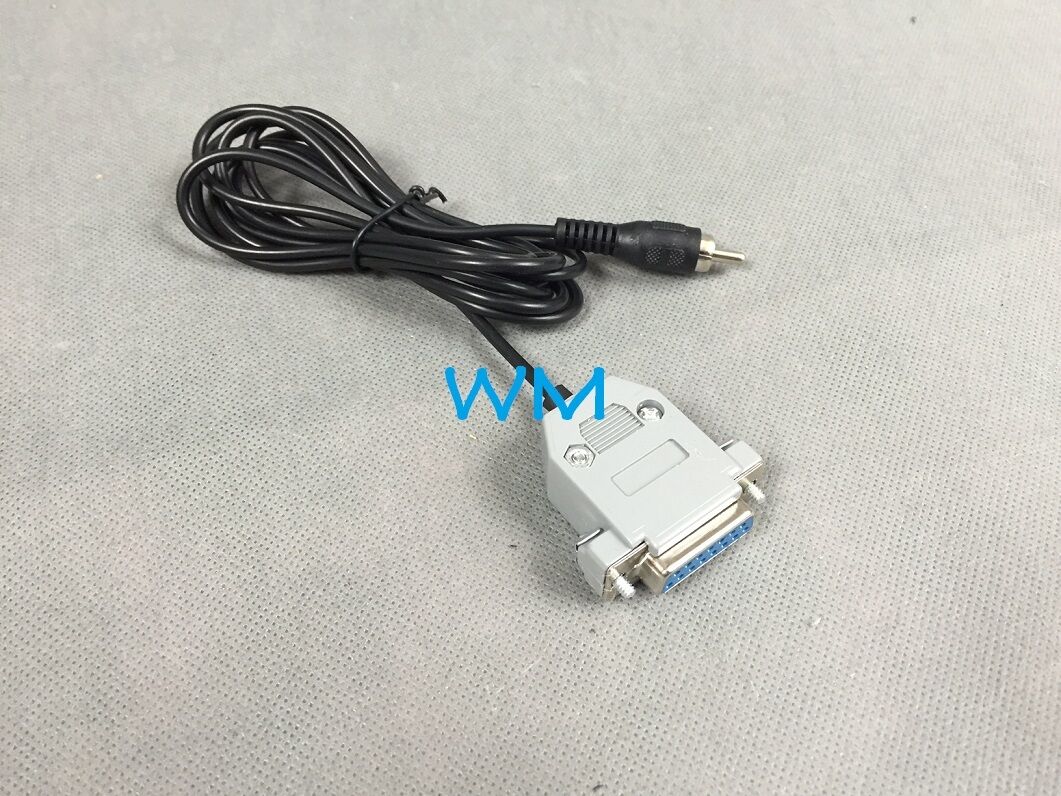-40%
TEAC Reference UD-503 Dual-mono USB DAC/balanced Headphone amp AUTHORIZED-DEALER
$ 422.39
- Description
- Size Guide
Description
WE ARE ANAUTHORIZED
TEAC DEALER! 00 list !
Dual-monaural USB DAC that supports 11.2MHz DSD with built-in fully-balanced/parallel-unbalanced headphone amplifier
DAC with dual-monaural structure is even more advanced
High-performance VERITA AK4490 DACs support 11.2MHz DSD and 384kHz/32-bit PCM
For DAC chips, which are the keys to digital audio, we have used VERITA AK4490 DACs, which are made by Asahi Kasei Microdevices Corporation and have an established reputation for use in high-end audio equipment.* The VELVET SOUND architecture provides the fine expressive capability suitable for the playback of high-resolution audio sources that reproduce sound waves outside the human audible range. Furthermore, a newly developed low distortion technology enables performance of S/(N+D) = 112 dB. This is the best level in the industry for a 120dB class DAC.
Not only is native playback with direct processing of 11.2MHz DSD signals possible, support is provided for an even greater variety of high-resolution audio sources, including 384kHz/32-bit PCM digital input. We have realized expression of the fine smooth detail and outstanding sense of sound placement that characterize high-resolution audio sources.
*The AK4490 is a product in the Audio4pro™ family brand developed by Asahi Kasei Microdevices Corporation for professional audio equipment and high-end digital audio applications.
Dual-monaural structure supports fully-balanced transmission and realizes further advancement
Behind the expressiveness of the UD-503, which exceeds the level expected of its class, is an indulgent dual-monaural circuit structure that encompasses every aspect from the power and D/A sections to the analog output stage.
Starting with the toroidal core power transformers, which feature the ability to supply stable current, and the high-performance VERITA AK4490 DACs, the dual-monaural structure has a complete mono circuit for each channel. This prevents the signals from interfering with each other as much as possible. Interference is suppressed between the left and right channels, which is particularly important for headphone listening, so this unit can also be used as a high-performance headphone amplifier.
Furthermore, by processing the output signals of each channel completely with a differential from immediately after D/A conversion to the final output stage, common mode noise is removed and the sense of air that high-resolution audio has is not lost in transmission during balanced output.
In addition to 44.1kHz and 48kHz internal clocks, 10MHz external clock input is also supported./dt>
When connected by USB, rather than synchronizing with a computer clock that is unstable and noisy, the UD-503 supports asynchronous USB transfer mode, allowing it to control PCM and DSD signals by synchronizing with its own clock generated by its built-in high-precision crystal oscillator. Two dedicated internal clocks running 44.1kHz and 48kHz are built in. By applying clock from an audio grade high-precision crystal oscillator, which features low phase noise, to input signals which that sampling frequency are whole number multiples, the effect of jitter on audio quality can be largely suppressed and the audio source can be reproduced faithfully.
In addition, with support for 10MHz external master clock input, synchronization with master clock signals of even higher precision is possible. By synchronizing with clock that has an even higher precision, you can enjoy changes in tone quality and improved audio quality that can be felt physically.
DSD Up-conversion function using a custom chip
Using an FPGA (programmable IC) of our own design that utilizes a fluency algorithm to smoothly augment digital audio signals, in addition to the 2x, 4x and 8x upconversion of PCM digital signals, DSD up conversion is also supported. Using this, you can easily experience the dense sense of air that DSD files have even when listening to CDs from your collection.
You can up-convert 44.1kHz/16-bit audio files ripped from CDs up to 11.2MHz DSD format files, which have about 256 times the amount of data as the original CD files. 48kHz PCM audio files can be played back in 12.2MHz DSD format.
Four types of PCM digital filter and two types of DSD filter
In addition to four types of PCM digital filters and an OFF mode, the unit has two types of DSD digital filters, so you can choose the best filter for the input file format and type of music. You can enjoy the subtle sound nuances of different filters without needing to connect different USB DACs.
PCM Filters
FIR SHARP:
An FIR filter with a steep roll-off sharply cuts signals outside the audio band.
FIR SLOW:
An FIR filter with a slow roll-off gently cuts signals outside the audio band.
SDLY SHARP:
A short delay filter with a steep roll-off sharply cuts signals outside the audio band.
SDLY SLOW:
A short delay filter with a slow roll-off gently cuts signals outside the audio band.
DSD Filters
CUTOFF
50kHz
150kHz
NOTE: When receiving signals 352.8 kHz or 384 kHz, the digital filter will be disabled during playback regardless of this setting.
Isolation circuit that completely separates the grounding of the digital and analog sections
Between the digital and analog sections, the circuit design uses a digital isolator to completely isolate both the power supply and the ground. So, all noise coming from digital input sources, starting with noise from the computer via USB, is prevented from entering the analog section by way of the power line or the ground. An isolation circuit offers significant benefit particularly when playing high-resolution audio sources with high sampling rates. The UD-503 is the first product in our Reference Series to include one.
Independent high-capacity toroidal core power transformers for left and right channels
Both left and right channels each have one dedicated high-capacity toroidal core power transformer that supplies stable current. This is also a continuation of the dual-monaural design and enables the stable supply of current to each channel without being influenced by the changes in current consumption due to processing of the other channel's signal. Even though it is small, we have incorporated approaches that are used in much larger high-end audio devices.
Analog output circuits that have been further improved
Our original TEAC-HCLD output buffer circuit, which is a Current-Enhancing Output Buffer circuit
In order to transfer music signals to output devices without losing their great dynamic range, we have included TEAC-HCLD (High Current Line Driver) circuits. These increase the current transfer capability that is crucial for analog output circuits.
We have applied the expertise that we have gained in the design of audiophile equipment, and for each channel side included two buffer circuits with high current transfer capabilities. By using differential drive for balanced output and parallel drive for unbalanced output, we have increased current transfer capabilities, allowing the transfer of music signals without losing their dynamism.
Preamp circuits now use TEAC-QVCS high-precision volume control with a four-circuit structure
The UD-503 can also be used as a preamp. One pair of XLR balanced outputs and one pair of RCA unbalanced outputs and included and can be set to either an adjustable or a fixed volume level, allowing a simple system to be put together in combination with a power amplifier or active speakers. We have even considered connection of record players such as the TEAC TN-300 turntable, cassette decks and other analog sources with line outputs by also including one pair of analog RCA inputs.
For the preamp circuit, we have utilized the TEAC-QVCS (Quad Volume Control System), which is a circuit with a fully-balanced design that uses balanced processing of the audio signal every stage from immediately after conversion from digital to analog until it reaches the volume amplifier.
Control signals transmitted from the volume knob simultaneously adjust the variable gain amp type volume controls for a total of four independent circuits—positive and negative for both of the left and right channels. Using this system, the unnecessary manipulation of audio signals is eliminated, and the left/right and positive/negative independence of the audio signals is preserved, achieving clear sound quality with outstanding channel separation. (This does not apply when using unbalanced analog input.)
This volume control system realizes 256 steps of volume adjustment in 0.5dB increments over the complete range from −95 dB to +24 dB. Precise volume adjustment has been made possible using a remote control, which is difficult using motorized analog volume. In addition, optimal volume levels can be achieved for headphone listening, which requires precise volume adjustment, using headphones with various levels of efficiency.
Volume display using OELD has excellent visibility
The organic electroluminescent display (OELD) with a 4-level dimmer provides high contrast and excellent visibility. A large font is used to enable listeners to check the volume even from distant positions.
Headphone amplifier that brings out even more of the potential of headphones
Headphone amplifier with discrete construction supports balanced drive headphones
The connection of balanced drive headphones is enabled by also using for headphone output TEAC HCLD circuits that are for line output and are composed of 4 output transistors each for both left and right channels. Furthermore, even during single end use, drive that is much stronger than an ordinary single end headphone amplifier is possible by making these transistors operate in parallel. In this unique circuit design, due to the AB class amplifier that greatly expands the A class operating range, A class operation is used for most of the range used in ordinary headphone listening. The potentials of various types of headphones can be brought out, starting with 600Ω high-impedance headphones.
On the front of the unit, two 3-pole TRS (standard stereo) jacks are provided as headphone outputs. These can be switched between three types of drive operation. In addition to connecting balanced drive headphones, you can also use unbalanced drive to connect two pairs of ordinary headphones, as well as use active ground* drive, which can further decrease noise during silences and enhance the expressiveness of delicate sounds.
Introducing a new drive method for headphones: active ground drive
The active ground method is a drive method that, using the same connection method as balanced connection, forcibly sets the COLD to stable 0V with an amplifier circuit that connects the COLD to the ground. Not only can a ground that is closer to the ideal be achieved than when using the general grounding method, this method has the effect of suppressing the influence of hum from the power supply. Since the noise floor is lowered and silence enhanced, the breathing of artists and the textures of sounds can be felt even more immediately.
Enclosure designed with great attention to detail
The full-metal body realizes both vibration control and elegant style in an A4-size body that enables placement on a desktop
The construction of the entire body from metal panels that are effective against external noise suppresses the penetration of electromagnetic noise emitted by computers and other devices. This realizes a clean internal environment with low noise even when the surroundings are hostile to audio equipment. The metal chassis is also wrapped from both sides with 8mm-thick aluminum panels, and a center beam connects the front and rear of the chassis. These features prevent twisting and bending to realize a strong and stable body.
In addition, the footprint that is the size of a page* allows it to be placed on tables, sideboards and other small spaces.
*Not including jacks, knobs and other protruding parts.
Symmetrically placed XLR output and RCA input and output jacks
The output jacks on the rear panel, including metal-plated XLR jacks for balanced output and RCA pin jacks for unbalanced output, have been symmetrically located for the shortest signal paths. The unit has been designed for connection with high-end equipment. For example, the left and right pin jacks have been placed with enough space between them to enable the connection of large-diameter RCA pin jacks.
In addition, three digital inputs on the rear panel (USB, coaxial and optical) are complemented by one (combined coaxial/optical connector) on the front. Starting with 192kHz/24-bit using the coaxial and optical digital inputs, the input of 2.8MHz DSD using DoP and other high-resolution signals is supported. The digital input on the front is a combined coaxial mini and optical mini connector, making it simple to connect a TEAC HA-P90SD or other portable digital audio player capable of digital output. (A coaxial-3.5mm mini conversion cable is included.)
Three supportive pinpoint feet that allow easy installation
The three-point support method used for the legs enables stable body installation without influence from even the slightest surface irregularities. An original structure that unifies the spike-shaped foot with the mortar-shaped foot-stand is used for each leg. Vibrations and resonance are reduced by supporting the body of the unit on pinpoints. This thoroughly eliminates mid and low frequency heaviness and murkiness and realizes improved resolution, which brings out the details of sounds and sound placement.
Each pinpoint foot used on the UD-503 is composed of the foot (top of photograph) itself that is attached firmly to the chassis, and a foot base (bottom of photograph). The base flange (the outer rim of the mortar-shaped part) hangs from the flanges of three screws. Due to this structure, the interlocking flanges prevent the feet bases from falling off or shifting when the body of the unit is lifted. When the unit is placed, each spike point touches only the single deepest point in the mortar-shaped part of its base.
Although the pinpoint method has been called the ideal for audio equipment feet, complete installation had been extremely difficult. With this structure, we have made installation using this method simple.。
TEAC HR Audio Player, which supports 11.2MHz DSD playback on both Windows and Mac, provided for free
11.2MHz DSD files can be played back easily using Windows or Macintosh computers without making complicated settings. The next-generation of high-resolution audio sources can be enjoyed immediately. (When using a Windows computer, a separate driver must be installed.)
Features -a-glance
USB DAC that supports 11.2MHz DSD and 384kHz/32-bit PCM
Dual-monaural circuit structure used from the power supply to the digital and analog sections
Both left and right channels have their own high-end AK4490 DACs, which are made by Asahi Kasei Microdevices Corporation
Two high-capacity toroidal core power transformers—one each for left and right channels
Isolation circuit that completely separates the digital and analog sections electrically
4 TEAC HCLD buffer amplifiers, which are current-enhancing output buffer circuits, are used for the line amplifiers
Up-conversion to formats up to 12.2MHz DSD and 384kHz/32-bit PCM using an FPGA (programmable IC) that utilizes a fluency function
Two types of DSD filter and four types of PCM digital filter, as well as an OFF mode
10MHz external clock input supported (available during USB asynchronous transmission)
Two high-precision internal clocks—one each dedicated to 44.1kHz and 48kHz signals (available during USB asynchronous transmission)
One pair of RCA analog unbalanced inputs
Volume output can be set to fixed, fixed +6dB or variable for the one pair of XLR analog balanced outputs and one pair of RCA analog unbalanced outputs
XLR jack polarity can be set (2 HOT or 3 HOT)
TEAC QVCS high-precision volume circuit
Large digital volume display with excellent visibility and remote control with one-button operation of various functions
OELD display shows input signal type and various settings (with 3-level dimmer and off functions)
Fully-balanced drive headphone amplifier with discrete construction and maximum output of 700 mW + 700 mW
Headphone amplifier can be switched among 3 drive types: unbalanced, balanced and active ground
Digital inputs on the back include one USB, one coaxial and one optical
Combined coaxial mini/optical mini digital input connector on front is convenient for digital input from portable devices
Low power consumption design and automatic power saving function meet modern expectations
The full-metal body realizes both vibration control and elegant style in an A4-size body that enables placement on a desktop
TEAC original design for three-point support using pinpoint feet with attached bases
Compliant with RoHS
Digital Audio Input
Coaxial
Connector
RCA jack x 1
1/8" (3.5mm) Mini jack x 1 (compatible with Optical Input)
Input Level
0.5 Vp-p
Input Impedance
75 ohms
Supported Format
DSD, PCM
DSD
2.8MHz (176.4kHz/24bit DoP transfer)
PCM
32k / 44.1k / 48k / 88.2k / 96k / 176.4k /192kHz, 16 / 24bit
Optical
Connector
TOS link x 1
1/8" Mini Optical jack x 1 (compatible with Coaxial Input)
Input Level
–24.0 to –14/5dBm peak
Supported Format
DSD, PCM
DSD
2.8MHz (176.4kHz/24bit DoP transfer)
PCM
32k / 44.1k / 48k / 88.2k / 96k / 176.4k /192kHz, 16 / 24bit
USB
Connector
USB B type x 1
Supported Format
DSD, PCM
DSD
2.8M / 5.6M / 11.2MHz
PCM
32k / 44.1k / 48k / 88.2k / 96k / 176.4k /192k / 352.8k / 384kHz, 16 / 24 / 32bit
Analog Audio Input
Connector
RCA jack x 1 pair
Input Impedance
51k ohms
Sensitivity
130mV
Analog Audio Output
Connectors
Balanced
XLR 3-32 x 1 pair
Unbalanced
RCA jack x 1 pair
Output Impedance
Balanced
188 ohms
Unbalanced
150 ohms
Max Output Level
Fixed (0dB)
2.0Vrms (XLR/RCA)
Fixed (+6dB)
4.0Vrms (XLR/RCA)
Variable
12.0Vrms (XLR), 6Vrms (RCA)
Frequency Response
5Hz to 80kHz (+1dB/–3dB)
Signal-to-Noise Ratio
Balanced
112dB (A-weighted, 1kHz)
Unbalanced
110dB (A-weighted, 1kHz)
Total Harmonic Distortion
0.0015% (1kHz, LHF: 20Hz to 20kHz)
Headphone Output
Connectors
1/4" (6.3mm) Stereo jack x 2
Format
Balanced, Active Ground, Unbalanced
Polarity
Balanced
Tip: HOT, Ring: COLD, Shield: GND
Active Ground
Tip: HOT, Ring: COLD, Shield: GND
Unbalanced
Tip: L, Ring: R, Shield: GND
Max Output Power
Balanced
700mW + 700mW (32ohms loaded, THD 1%)
Unbalanced
500mW + 500mW (32ohms x 1 loaded, THD 1%)
350mW + 350mW (32ohms x 2 loaded, THD 1%)
Supported Headphone Impedance
16 to 600 ohms
Audio Settings
Up-conversion
x8, x4, x2, Off
DSD Cut-off Frequency
50kHz, 150kHz
PCM Digital Filter
FIR Sharp, FIR Slow, Short-delay Sharp, Short-delay Slow
Line Output
RCA, XLR (Pin2: HOT), XLR (Pin3:HOT)
Line Output Level
Fixed (0dB), Fixed (+6dB), Variable, Off
Supported OS
Windows
Windows 10 (32/64-bit), Windows 8.1 (32/64-bit),
Windows 8 (32/64-bit), Windows 7 (32/64-bit)
Macintosh
Yosemite (OS X10.10), Mavericks (OS X10.9),
Mountain Lion (OS X10.8), Lion (OS X10.7)
Operation Power
US/Canada
AC 120V, 60Hz
UK/Europe
AC 230V, 50Hz
Power Consumption
16 Watts (0.4 Watts Standby Mode)
Overall Dimensions
(including protrusions)
11.4" (W) x 3.2" (H) x 9.8" (D)
290 (W) x 81.2 (H) x 248.7 (D) mm
Weight
9.3 lbs. / 4.2 kg
Accessories
Remote control (RC-1319), AAA Batteries x 2, RCA-Mini Plug Cable, Power Cord, Cushion for Foot x 3, Owner's Manual (including Warranty card)
Up-convert Chart
OUTPUT
Up-convert Settings
Off
2Fs
4Fs
8Fs
DSD
INPUT
384kHz
384kHz
384kHz
384kHz
384kHz
12.2MHz
352.8kHz
352.8kHz
352.8kHz
352.8kHz
352.8kHz
11.2MHz
192kHz
192kHz
192kHz
192kHz
384kHz
12.2MHz
176.4kHz
176.4kHz
176.4kHz
176.4kHz
352.8kHz
11.2MHz
96kHz
96kHz
96kHz
192kHz
384kHz
12.2MHz
88.2kHz
88.2kHz
88.2kHz
176.4kHz
352.8kHz
11.2MHz
48Hz
48kHz
96kHz
192kHz
384kHz
12.2MHz
44.1kHz
44.1kHz
88.2kHz
176.4kHz
352.8kHz
11.2MHz
32kHz
32kHz
64kHz
128kHz
256kHz
8MHz
※352.8kHz and 384kHz are supported on USB Input only.
No Up-conversion
